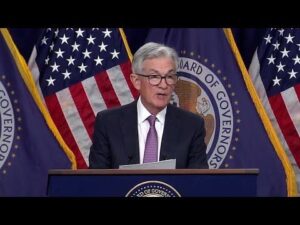Federal Reserve policymakers are expected to lower short-term borrowing costs by a modest quarter of a percentage point at their upcoming meeting, reflecting a belief that the labor market is cooling but not collapsing.
In October, U.S. employers added only 12,000 nonfarm payroll jobs, significantly below the anticipated 113,000, largely attributed to factors like a Boeing strike and hurricanes impacting employment.
Despite these challenges, the unemployment rate held steady at 4.1%, and analysts noted that bad weather and strikes may have skewed perceptions of labor market weakness.

While some indicators suggest it’s becoming harder to find work—evidenced by an increase in the average length of unemployment to 22.9 weeks—the Federal Reserve is likely to interpret the recent data as a sign that they can continue normalizing monetary policy without triggering inflation.
Interest rate futures now indicate a 99% chance of a quarter-point rate cut on November 7, with expectations for further cuts by year-end. The Fed’s upcoming policy meeting follows the U.S. presidential election, which, while not expected to directly influence their decision, adds an element of uncertainty to the labor market that could affect future job growth.

